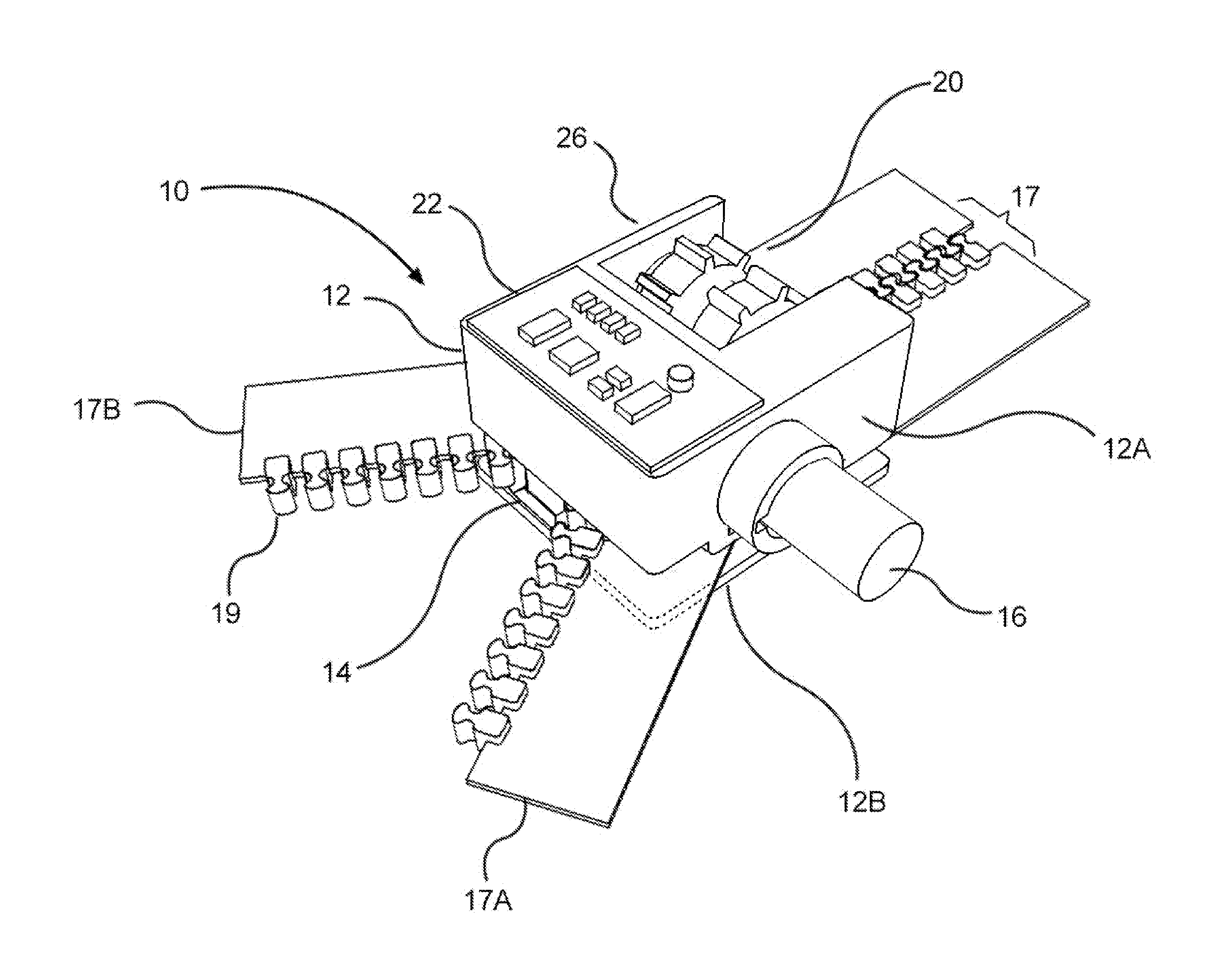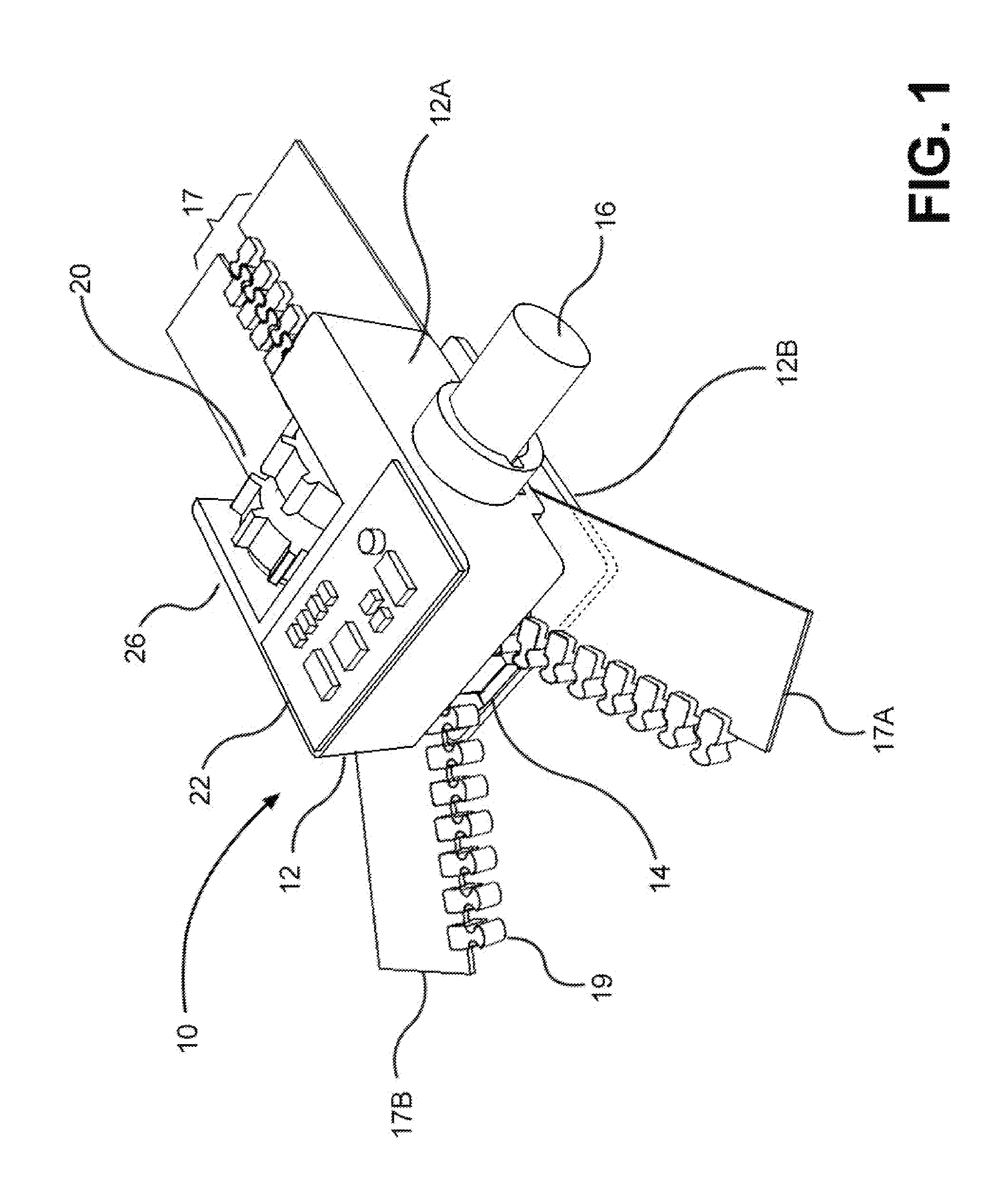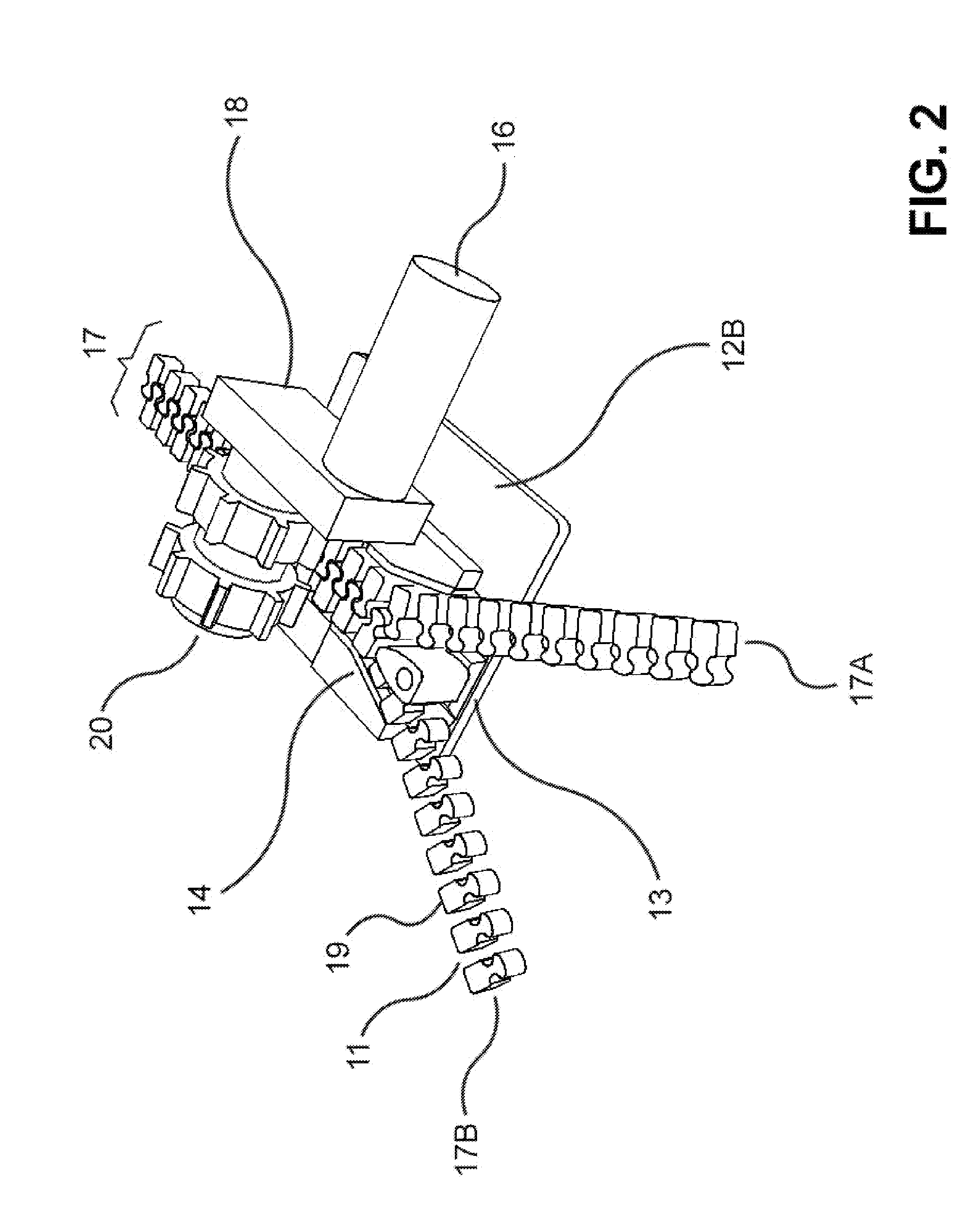Methods and Apparatus for Robotic Zipper
a robotic zipper and zipper technology, applied in the field of robotic zippers, can solve the problems of difficult manipulation of zippers placed at the back of a dress or the back of a boot, the inability to improve the basic rudimentary function of zippers for users,
- Summary
- Abstract
- Description
- Claims
- Application Information
AI Technical Summary
Benefits of technology
Problems solved by technology
Method used
Image
Examples
Embodiment Construction
[0035]As is the case with many inventions, the present invention for a robotic zipper is subject to a wide variety of embodiments. However, to ensure that one skilled in the art will fully understand and, in appropriate cases, be able to practice the present invention, certain preferred embodiments of the broader invention revealed herein are described below and shown in the accompanying drawings.
[0036]Pursuant to the invention, a robotic zipper system can be embodied in relation to a zipper or a continuous closure for joining edges, such as but not limited to edges of fabric, that can be augmented with robotic attributes, such as sensing, actuation and computation, to create a programmable robotic zipper closure. With this in mind and looking more particularly to the accompanying figures, a first preferred embodiment of the present invention for a robotic zipper system is indicated generally at 10 in FIG. 1 and in an exploded view in FIG. 3. There, one sees that the robot zipper 10...
PUM
 Login to View More
Login to View More Abstract
Description
Claims
Application Information
 Login to View More
Login to View More - R&D
- Intellectual Property
- Life Sciences
- Materials
- Tech Scout
- Unparalleled Data Quality
- Higher Quality Content
- 60% Fewer Hallucinations
Browse by: Latest US Patents, China's latest patents, Technical Efficacy Thesaurus, Application Domain, Technology Topic, Popular Technical Reports.
© 2025 PatSnap. All rights reserved.Legal|Privacy policy|Modern Slavery Act Transparency Statement|Sitemap|About US| Contact US: help@patsnap.com



